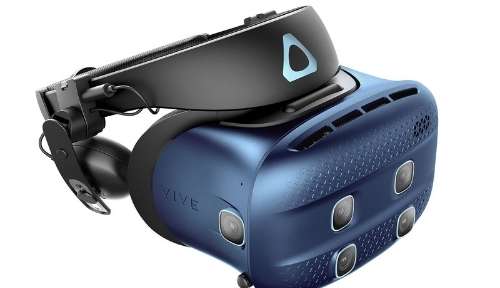
“Welcome to XR, where the physical and virtual worlds intersect and interact. Create stereo pass-through experiences that are impossibly sharp and highly immersive, all made possible by the high-resolution dual-cameras and displays with the most impressive visual resolution from VIVE.”
VRS Review
VRS OVERALL RATING
Recomended Not RecomendedThe Vive Cosmos XR is an upcoming, developer-focused variant of the standard Vive Cosmos VR headset. At its core, it’s a standard Vive Cosmos headset, but with a new extended reality faceplate connected. Using HTC’s innovative proprietary connection system.
The standard Vive Cosmos uses a six-camera inside-out tracking array on its faceplate. With the XR, that’s been replaced with incredibly high-quality stereoscopic cameras.
The idea is to pass through 3D visual data to the screens of the Cosmos, allowing for sophisticated extended reality experiences. In other words, the headset can now freely present the user with a range of experiences, ranging from fully-immersive VR to spatially-accurate augmented reality content.
At the time of writing, we haven’t actually seen any XR demos of the Cosmos XR. It’s also not clear when or how the new faceplate will be sold to existing Cosmos owners. Another open question is whether the Cosmos XR, as a bundle, has the same sort of inside-out tracking performance as the standard one.
If it doesn’t have any compromises compared against the standard model, why buy the original at all? Why swap between faceplates if you have both? These questions still require answers, and as I write this entry, we have no choice but to wait.
Our assumption about the Cosmos XR, apart from the XR faceplate and new software, is that it’s essentially the same headset as the standard Cosmos. That means you get a field of view not quite as wide as a Valve Index, but a screen resolution that’s slightly higher. The 90Hz panel is also substantially slower than the 144Hz panel in the Index.
This has put the vanilla Cosmos in a weird position where we’d either recommend spending a little more for an Index or a lot less for a Quest 2, but if the XR offers compelling augmented reality as well as premium VR, it might actually be the best model to go for.
SPECIFICATIONS
| Display | LCD |
| Panel size | Unknown |
| Resolution | 1440 x 700 |
| Refresh rate | 90Hz |
| Field of view | 110-degrees |
| Sensors | Unknown |
| Connections | Unknown |
| Audio | 3D |
